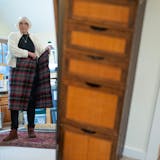Only 7,400 COVID-19 vaccine shots have been given to residents and workers at Minnesota nursing homes in the past week despite a targeted campaign that gave them first priority for vaccinations.
The slow pace has stemmed from bottlenecks in the patchwork distribution system, particularly with the large pharmacy chains that were tapped by the federal government to deliver the shots in nursing homes and assisted-living facilities. Those pharmacy chains, CVS Health and Walgreens, lacked the technicians to administer the vaccines quickly, which has resulted in unexpectedly long waits for the shots to arrive.
Across the state, some long-term care providers have turned to local pharmacies in a push to get vulnerable residents and staff inoculated as quickly as possible, industry representatives say.
State health officials acknowledged in written materials prepared for a state hearing Wednesday that smaller chains and local pharmacies "will be able to move more quickly and get on to" assisted-living facilities.
"Clearly, we're not moving fast enough as a state to deliver this vaccine to those who are most vulnerable," said Kristine Sundberg, executive director of Elder Voice Family Advocates. "If this continues, we could see people die unnecessarily."
The rollout of the vaccines is the most ambitious in modern U.S. history, and state officials said it is proceeding at a remarkably fast rate given the limited supply and complexity. Just a month ago, they noted, there was not an approved vaccine for the novel coronavirus in the United States, and nursing homes in Minnesota did not begin vaccinating until Dec. 28.
"We look forward to expanding this pace and getting more vaccines to more people in the weeks ahead," said Scott Smith, a spokesman for the state Department of Health.
State health officials said Wednesday they are still on track to inoculate all 500,000 health care workers and long-term care residents by the end of January — the first wave of Minnesota's vaccination program. Once that group is vaccinated, the state will move on to getting the shots to essential workers, such as schoolteachers and firefighters, as well as those age 75 and older. More than 1 million Minnesotans are part of the second wave, which could begin in early February depending on supply, state officials said.


